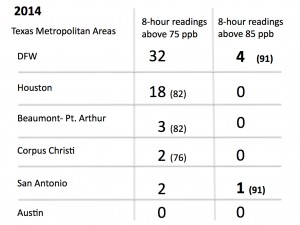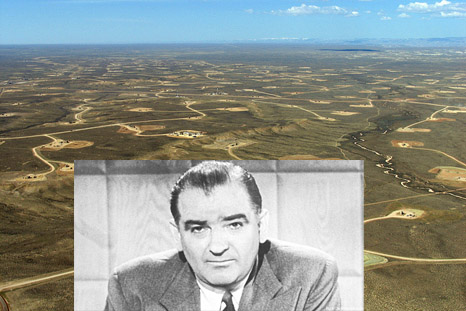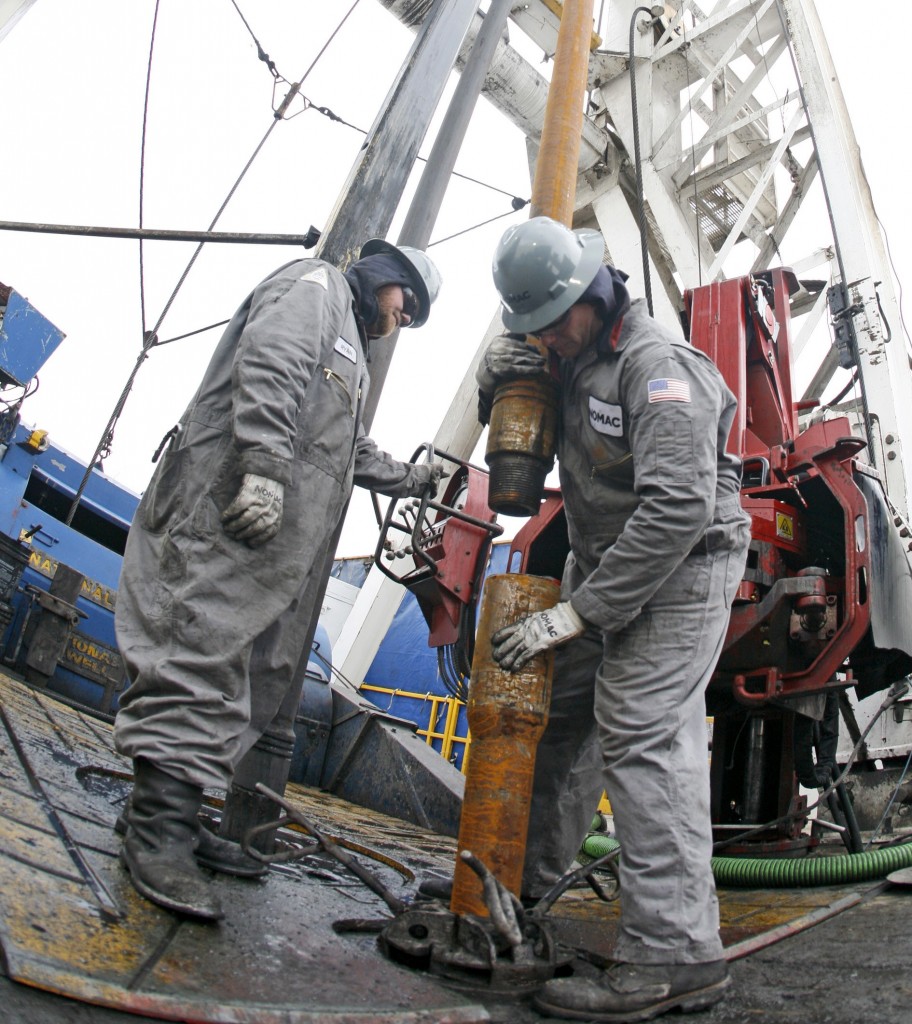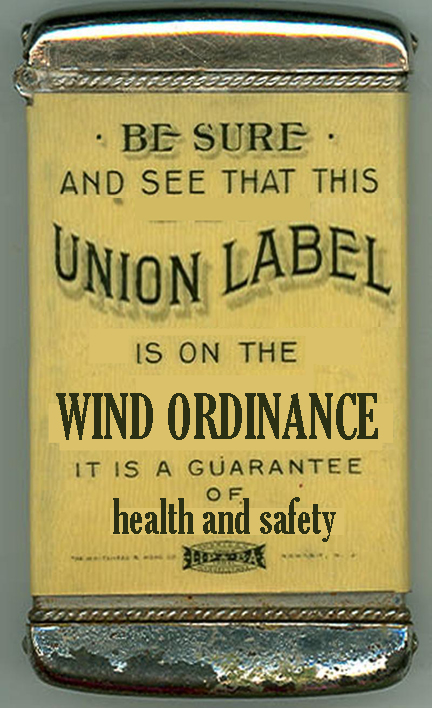Air Quality
Children Exposed to Ambient Levels of Urban Air Pollution Are Five Times more Likely to Have ADHD
 Over the course of this blog, there have been countless "Air Pollution Linked to….." headlines. Not just diseases or illness you might associate with breathing bad air like COPD, or heart disease, or strokes, but Parkinson's, immune system breakdowns, Autism and so forth – ailments that seem to be skyrocketing even as Americans as a whole receive better medical care and live longer. Almost all the time these ailments are tied to "ambient" levels of air pollution, i.e. levels you might encounter if you lived in a typical city or…downwind of a large polluter.
Over the course of this blog, there have been countless "Air Pollution Linked to….." headlines. Not just diseases or illness you might associate with breathing bad air like COPD, or heart disease, or strokes, but Parkinson's, immune system breakdowns, Autism and so forth – ailments that seem to be skyrocketing even as Americans as a whole receive better medical care and live longer. Almost all the time these ailments are tied to "ambient" levels of air pollution, i.e. levels you might encounter if you lived in a typical city or…downwind of a large polluter.
The latest example of this phenomenon is study from Columbia University's Center for Children's Environmental Health, linking ambient levels of a particular kind of air pollution and the risk of Attention Deficit Hyperactivity Disorder, or ADHD in young children. The air pollution in question is a familiar one to Downwinders – Polycyclic Aromatic Hydrocarbons, or PAHs, that include a variety of nasty substances, including benzo[a]pyrene. PAHs are produced by from "incomplete combustion."
Downwinders first encountered PAHs because of the long list of "Products of Incomplete Combustion" from the burning of hazardous waste in the Midlothian cement plants. But they can be produced from the burning of fossil fuels, tobacco, or the organics that might be in a gas well flare. In addition, they can also show up in the food we eat.
In the Columbia study, 233 non-smoking African-American and Dominican pregnant women and their off spring living in New York City were followed for nine years. Almost half the children started out with detectable levels of PAHs in their cord blood at birth. As the study's authors point out, this is worrisome because "during the fetal period and early childhood years, the brain is rapidly developing and vulnerable to neurotoxic insults that may manifest as adverse outcomes in childhood and adulthood."
And that's exactly what the researchers found. Prenatal exposure to PAHs in umbilical cord blood at delivery was associated with developmental delay at age 3, reduced IQ at age 5, and symptoms of anxiety/depression and attention problems at ages 6–7. By age 9, children whose mothers had higher levels of PAHs in them at birth were five times more likely to be diagnosed with ADHD than those with lesser levels.
It's important to remember that this affect was caused by exposure levels in the ambient NYC air, not particularly "dirty air" by traditional standards. Populations who live downwind of coal plants, cement plants, large gas plays, or any large, continuing source of PAHs might be expected to experience higher rates of impact because their exposure levels are higher.
And although this study focused on PAHs, the study notes that previous studies have identified "an association between ambient particulate matter (PM10) and childhood ADHD," a combustion pollutant even more common than PAHs.
Studies like these raise the same question time and again: how much of our current epidemic of childhood behavioral and developmental problems are caused by environmental factors within our control? With each successive year of research, we find links between "ambient levels" of environmental contaminants and a long list of health problems never before associated with pollution.
They also highlight the complete inadequacy of our current way of regulating pollution. As long as we're only regulating it from each source, instead of from a cumulative perspective, we're always be overdosing people with contaminants. By themselves, many different sources of air pollution can be churning out "safe" levels of things that can kill you. Combined downwind, not so much.
2014 DFW Smog Report: Good News But Don’t Hang Up the Gas Mask Yet
 For the first time since DFW began recording its smog levels, the region's three-year running average dipped below the 1997 eight-hour 85 parts per billion (ppb) standard. After years of leveling off at around 86-87, it's dropped to 81 ppb. That's good news.
For the first time since DFW began recording its smog levels, the region's three-year running average dipped below the 1997 eight-hour 85 parts per billion (ppb) standard. After years of leveling off at around 86-87, it's dropped to 81 ppb. That's good news.
DFW's decrease is attributed to 2011's terrible numbers rolling off the board and a wetter, cooler and windier summer than normal these last five months or so. As both drought-ridden 2011 and this year's results demonstrate, weather still plays an extremely critical role in how large or small our smog problem will be. Another summer or two like 2011 could easily put us back over the 1997 standard. More wet and cooler weather could see the decrease continue.
The news would be better except that we were supposed to have originally accomplished this milestone in 2009, then again last year after a second try, according to the Texas Commission on Environmental Quality (TCEQ).
As it is, we still haven't reached the current, more protective 2008 national standard that was revised downward to 75 ppb after a review of the scientific literature.
In January, TCEQ will host a public hearing on its proposed "plan" to EPA to meet that goal that predicts most, but not all DFW monitors will reach 75 ppb by the summer of 2018.
Despite overwhelming evidence that new controls on the Midlothian cement plants and the reduction of gas industry pollution could speed this achievement, TCEQ's new plan contains no new pollution control measures on any major sources of smog polluters – cement kilns, coal plants, gas sources – but instead relies on the federal adoption of a new lower-sulfur gasoline mix for on-road vehicles. Like past proposals by Rick Perry's TCEQ, this one depends solely on the feds to get them into compliance. TCEQ isn't lifting a regulatory finger to help.
And its new plan once again aims high, not low. At last count, there were at least three Tarrant and Denton County monitors that TCEQ admitted would still be above the 75 ppb standard at the end of 2018. "Close enough" is the reply from Austin.
From a public health perspective, it's even worse. Why does the ozone standard keep routinely going down? Because new and better evidence keeps accumulating to show widespread health problems at levels of exposure to smog that were once considered "safe." About every five years, the EPA's scientific advisory committee must assess the evidence and decide if a new standard needs to be enforced to protect public health.
For most of the last ten years, the position of this independent panel of scientists is that the standard should be somewhere between 60 and 70 ppb. They were ignored in 2008. They were ignored in 2011. They once again came to this conclusion last May. What was the evidence that persuaded them? That the current 75 ppb standard for smog causes almost 20% of children in "non-attainment areas" to have asthma attacks, and leads to hundreds of thousands of deaths every year. Cutting the standard to 60 ppb reduces those deaths by 95%. Since the Clean Air Act states the EPA is duty bound to set a smog standard protective of human health, 60 ppb seems to be the threshold level that the current scientific literature says is actually safe for the majority of the population most vulnerable to the impact of bad air. By contrast, a smog level of 70 ppb only reduces those deaths by 50%. (Policy Assessment for the Review of the Ozone National Ambient Air Quality Standard, U.S. Environmental Protection Agency, Office of Air and Radiation, Office of Air Quality Planning and Standards, Health and Environmental Impacts Division, Ambient Standards Group, August 2014)
By December 1st, EPA Administrator Gina McCarthy must decide whether to officially recommend a standard in that 60-70 ppb range. It looks as though this time, the EPA might just endorse what the scientists are recommending, although it's unclear whether it'll be the upper or lower part of that range.
So even while the TCEQ is saying it's "close enough" to achieving the 75 ppb standard left over from George W's administration by 2018, the evidence is that level is too high to prevent large public health harms and must be lowered. A lot.
This is why it's so infuriating that the TCEQ is satisfied with getting only "close enough" to a 2008 standard that's about to become obsolete. Austin knows it could demand better air pollution control measures on the market right now that would accelerate the decrease in smog. It knows the pubic health would benefit from requiring such measures. But it's willing to condemn DFW children and others at risk for many more years for the sake of keeping its "business-friendly" reputation.
And while this year's slip below the 85 ppb standard is a sign of some progress, it remains true that DFW still has the worst air in Texas – a title we took from Houston years ago. Take a look at the chart summarizing the 2014 ozone season across Texas. Despite the nicer weather, DFW still had almost twice as many readings above 75 ppb as Houston and four above the 85 ppb standard. Houston had no readings above 85. In fact, San Antonio was the only other city to record a level so high – once.
 DFW still has a smog problem and all it takes is another hot and dry summer to see it escalate. We need the help more controls on major sources could give us. We need Selective Catalytic Reduction on ALL the Midlothian cement and East Texas coal plants. We need electrification of gas compressors in the Barnett Shale. This should be the message to both the TCEQ and EPA during the public hearing in January.
DFW still has a smog problem and all it takes is another hot and dry summer to see it escalate. We need the help more controls on major sources could give us. We need Selective Catalytic Reduction on ALL the Midlothian cement and East Texas coal plants. We need electrification of gas compressors in the Barnett Shale. This should be the message to both the TCEQ and EPA during the public hearing in January.
DFW smog in 2014: we've met the Clinton era standard for now, on the way to trying to get "close enough" to the W Standard, and still very far from a new Obama standard. Don't hang up the gas mask yet.
First-Ever DFW Physician Presentation on Fracking in Mansfield October 29th
 (Mansfield)— A new group of Mansfield residents is sponsoring what’s believed to be the first DFW presentation by a medical doctor on the health effects of fracking as part of a campaign to re-write the city’s six-year old drilling ordinance they say no longer reflects the best science, or provides enough public protection.
(Mansfield)— A new group of Mansfield residents is sponsoring what’s believed to be the first DFW presentation by a medical doctor on the health effects of fracking as part of a campaign to re-write the city’s six-year old drilling ordinance they say no longer reflects the best science, or provides enough public protection.
Mansfield Gas Well Awareness is hosting Dr. Anne Epstein, M.D. at the Mansfield Holiday Inn on October 29th beginning at 7 pm. Dr. Epstein is an internal medicine specialist who graduated from Baylor Medical School and sits on the Lubbock County Board of Health. She’s a member of the Board’s Oil and Gas Advisory Committee that recently voted to recommend setbacks of 1500 feet separating homes, workplaces, and schools from wells. Mansfield currently allows wells as close as 600 feet to residences, with post drilling development up to 100 feet.
“Our 2008 ordinance was written before new scientific studies showing higher rates of birth defects and cancers among those living close to gas wells,” said Tamera Bounds, a member of MGWA. “Like Lubbock, Dallas and other Texas cities that have looked at those studies recently and adjusted their regulations, Mansfield must update its obsolete rules to better protect our families and property values.”
206 gas wells have been drilled in the city of 60,000 in the last six years with the potential to drill 300 more. That’s almost as many as Denton, with twice the population. Almost every Mansfield resident currently lives within a mile of one well or more. However, the Special Use Permits (SUPs) approved by the city expire after five years. SUPs for undrilled wells approved in 2008 and 2009 have already expired or will soon, and MGWA wants the city to take the opportunity to strengthen its drilling ordinance.
“We want to make sure our rules match the new science by allowing for bigger buffer zones, more air pollution controls and better monitoring and emergency response,” said Bounds. She citied 2008 correspondence from a gas well operator to the Mansfield Planning and Zoning Committee that claimed closer distances between schools and wells, as opposed to nursing homes, were justified because “children are very mobile.”
“We need rules based on more than the industry’s estimate of how fast our children can run.”
Among the recent studies cities by Bounds and scheduled to be reviewed by Dr. Epstein are those from the University of Colorado School of Public Health that trace close proximity to gas wells with higher rates of birth defects, and the National Institute of Occupational Safety and Health that discovered benzene and silica levels among workers at drilling sites that exceeded federal exposure limits.
Bounds’ group is being assisted by DFW clean air group Downwinders at Risk, which was instrumental in getting a new Dallas gas ordinance passed in 2013. Downwinders Director Jim Schermbeck says he thinks the Mansfield effort marks a milestone in Tarrant County’s coping with the Barnett Shale drilling boom. “It’s a great example of residents in a city saturated with wells after the first wave of drilling trying to recover and catch up with the science before the next wave makes things a lot worse.”
Schermbeck cautioned that the Mansfield group had an uphill climb considering its current council make-up.
At least two of Mansfield’s city council members are directly involved in the fracking business. Larry Broseh is the president of Drill King International, a manufacturer of drilling equipment, and Stephen Lindsey is Director of Government Affairs of Quicksilver Resources, a natural gas and oil exploration and production company.
Bounds said the group would ask those two council members to recuse themselves from the writing of a new ordinance because of their conflict of interests. “ This needs to be a citizen-driven process. It needs to be a science-driven process. The 2008 ordinance came directly from industry and hardly involved residents at all. This time, things need to be different.”
The Real Toxic Legacy of Rick Perry? The Thousands of Other Rick Perrys He Leaves In Charge of State Government
 When explaining how the powers of state government are distributed under the Texas Constitution, the emphasis is usually on how powerful the Lt. Governor is and how weak the Governor actually is – a leftover from the Confederate backlash to Reconstruction.
When explaining how the powers of state government are distributed under the Texas Constitution, the emphasis is usually on how powerful the Lt. Governor is and how weak the Governor actually is – a leftover from the Confederate backlash to Reconstruction.
But that explanation usually assumes a traditional two-term governor, not one who takes up residency for 14 years.
In the past it was hard for any one Texas governor to put their personal stamp on so many state agencies so deeply because they were out after four to eight years and the terms of the appointments were staggered. Multi-member commissions were a mix of appointees from different administration, representing different government philosophies and parties. This made compromise a necessity.
And then came Rick Perry.
After 14 years, he's not only been able to appoint all the top level decision-makers in all of the state's various agencies and commissions, he's been able to go down two to three layers deep in each bureaucracy and make sure those mid-level officeholders reflect the same views. Compromise is no longer necessary. Through this process, he's assembled more power than perhaps any other Texas governor in history.
Even if Wendy Davis were to win next month, it would take many years to replace Perry's choices for all of the state agencies that affect Texans on a daily basis. Some don't expire until 2019. And Davis would have to win approval for each appointment from what is shaping up to be the most business-friendly state senate Texas has seen since Spindletop.
Recently, the Austin American Statesman reviewed over 8,000 Perry appointments, and found:
Nearly 4 in 5 Perry appointees are white, even as the portion of whites in the state dropped from 55 percent in 2000 shortly before Bush left office to 44 percent in 2010. Overall, 77 percent of his appointees have been white, and 67 percent are male.
Perry has appointed 90 of his former employees to boards and commissions, placing trusted lieutenants in the upper echelons of government agencies. Twenty-three of those one-time governor’s office workers were given paid appointments.
Nearly a quarter of appointees are donors to Perry’s campaigns, together giving more than $20 million. That constitutes a fifth of all contributions he has received during his time as governor.
No agency reflects Perry's these trends more thoroughly than the Texas Commission on Environmental Quality.
Zac Covar, white and male, was a Perry aide, who then became an assistant to the TCEQ Chairman appointed by Perry, who then became Executive Director of the TCEQ, who then became one of three Commissioners himself. He's also a fellow Aggie, graduating with a Bachelor of Science in Poultry Science from Texas A&M University, making him imminently qualified to help run the largest environmental agency in the free world outside of the EPA. His term expires next year.
Commissioner Toby Baker, white and male, was another Perry aide, and another fellow Aggie, with a degree in Public Administration. His term expires in 2017.
Chairman Bryan Shaw, white and male, is still another fellow poultry science degreed graduate of A&M, although you be hard-pressed to discover that in his official job description now days (two chicken scientists ruling the TCEQ coop seems to be an embarasment that even shames the Perryites). Since he was last appointed in 2013, his six-year term won't be up until 2019.
It's not only the top administrators at TCEQ who are full-fledged mini-mes of Perry. It's also the agency's Chief Engineer Susana M. Hildebrand, who's been known to flat out lie to Legislative Committees about the inconvenient results of studies that don't reflect the hardcore pro-leave-industry-alone views of the Perry Administration. It's the TCEQ's Chief Toxicologist, Michael Honeycutt, who keeps insisting that smog really isn't that bad for you. And on and on.
The result of all this political in-breeding is an agency which is the largest purveyor of junk science in the state, taking every industry-financed "study" and promoting it as if it were gospel, even if it's in the extreme minority of scientific opinion, while discounting the overwhelming collection of independent academic reviews that contradicts it. That's how you arrive at the point where the state's major environmental agency says there's no such thing as climate change, no harm in smog, and the continuing release of millions of tons toxins are no big deal. That's how a month before Holcim decides to install SCR at its Midlothian cement plant, a representative of TCEQ can say straight faced in an Arlington regional air quality meeting that the technology "isn't technically feasible."
This is why many of the state's citizen groups have given up on anything useful coming out of Austin for the foreseeable future. They've decided that If change is going to happen in Texas it'll be at the local level, where Rick Perry's fingerprints have not yet smudged all reconciliation with reality. And that's exactly why recent local expressions of people power, like the Dallas drilling ordinance and the Denton fracking ban vote are such a threat to an otherwise watertight hegemony emanating from the Governor's office.
Energiewende: What Germany’s Green Energy Revolution Means for U.S.
 Many of you are probably headed to the Sierra Club's Earth Wind and Fire energy get together this coming weekend in Addison. As a kind of primer on how greener, cleaner energy could flourish in the US and what it would mean to the way we produce, distribute, regulate and charge for power, you might want to check out this New York Times piece from earlier in the month on how Germany is turning the corner.
Many of you are probably headed to the Sierra Club's Earth Wind and Fire energy get together this coming weekend in Addison. As a kind of primer on how greener, cleaner energy could flourish in the US and what it would mean to the way we produce, distribute, regulate and charge for power, you might want to check out this New York Times piece from earlier in the month on how Germany is turning the corner.
Deutschland is close to getting 30% of its energy needs from renewable sources, by far the leader among heavily industrialized nations – America is currently achieving about half that. That's impressive, but by far the most interesting parts of the story is what kind of ripples in the marketplace a commitment to green power can produce once a government decides to make that commitment.
For example, it's in large part due to German demand for solar that the prices of Chinese solar panels have plummeted, making the choice cheaper for everyone else around the planet. Likewise, more off shore wind power is being built to correspond to the daylight hours when it's needed most by consumers and those prices are also coming down thanks to German leadership.
Especially noteworthy is the anxiousness of utility companies who see their old business plan of large, centralized power systems evaporating with the rise of so many smaller, decentralized options. As the article states:
"A reckoning is at hand, and nowhere is that clearer than in Germany. Even as the country sets records nearly every month for renewable power production, the changes have devastated its utility companies, whose profits from power generation have collapsed.
Some experts say the electricity business is entering a period of turmoil beyond anything in its 130-year history, a disruption potentially as great as those that have remade the airlines, the music industry and the telephone business."
Among the strategies in play are "energy retainers" – regular payments to persuade utilities to keep some fossil-fuel power plants on standby for times when renewable sources lag. That's a complete upside down pyramid approach from previous years that saw those same older plants used as "base load" facilities with renewables supplementing them when necessary.
And while the sources of power are changing as a result of this energy revolution, so are the ways people use it. In Texas' deregulated electricity market, you're already seeing different pricing for different times of day so that consumers take better advantage of non-peak hours. Appliances like dishwashers and water heaters with "smart chips" in them could automatically take advantage of these differences and level out demand.
Check out the NYT piece and then, for a more radical American perspective on the German energy revolution and how it can be translated into action on this side of the Atlantic by the guy that invented the term "negawatts" read Amory Lovins' take. Lovins has been at the forefront of alternative energy since before the term was created and what were once thought to be fanciful flights of imagination on his part by the utility companies are the reality they're now having to deal with.
After a 14-year Campaign, State-of-the-Art Pollution Control Finally Coming to Midlothian
 (Midlothian) After a 14-year effort by local citizens, Holcim US Inc. is applying for a permit to the Texas Commission on Environmental Quality to install a Selective Catalytic Reduction (SCR) unit in their Midlothian facility. It's the first application for commercial use of SCR technology in any U.S. cement kiln.
(Midlothian) After a 14-year effort by local citizens, Holcim US Inc. is applying for a permit to the Texas Commission on Environmental Quality to install a Selective Catalytic Reduction (SCR) unit in their Midlothian facility. It's the first application for commercial use of SCR technology in any U.S. cement kiln.
DFW-based clean air group Downwinders at Risk has been advocating the use of SCR in the three Midlothian cement plants located just south of I-20 since 2000, when a German cement kiln first operated the technology successfully.
Together, the TXI, Ash Grove, and Holcim plants represent the largest concentration of cement manufacturing in the country and are a major contributor to DFW's historic smog problem.
"We need this pollution control technology in North Texas, and we're pleased to see Holcim's application," said Downwinders Director Jim Schermbeck. "But we wish residents could enjoy its results sooner than Holcim intends."
The SCR unit is planned for Holcim's idle Kiln #2 while a more common Regenerative Thermal Oxidizer will be built for its operating Kiln #1. Both technologies are being installed to meet new EPA emission standards for hydrocarbon pollution from cement plants. Those standards themselves were championed by Downwinders and other citizen groups in 2009, with over 200 people showing up at an EPA hearing the the DFW Airport Hotel to support them.
The deadline for compliance with the new standards is September 2016. However, restarting of Kiln #2, and the introduction of SCR in Midlothian, is dependent on local demand for Holcim's cement, which is still recovering from weak demand during the recession. That lack of demand could delay the technology's inauguration until after 2016.
Nevertheless, according to Schermbeck, Holcim's application for a permit to install SCR makes it's more likely that all of the Midlothian cement plants, and others in EPA "non-attainment areas" for smog pollution around the country, will be adopting it sooner rather than later.
"Holcim's application sets a precedent that's hard to ignore by regulators in Austin and Washington. For the first time a US cement plant has expressed enough confidence in SCR to make it a technically and economically-viable choice for pollution control. There's no going back."
SCR is widely considered to be the most advanced form of pollution control for cement manufacturing, capable of reducing smog-forming pollution by 90% or more, along with significant reductions in Particulate Matter, metals, and Dioxins.
Although about half a dozen European cement kilns are successfully operating the technology, U.S. plants have refused to endorse it. Two EPA-sponsored pilot tests of SCR are being conducted at Indiana and Illinois cement kilns as part of court-ordered settlements. Holcim's application for its Midlothian kiln is the first time and American cement plant is voluntarily approving SCR use.
Although it's not coming in time to impact the current DFW clean air plan, due to go to public hearing in January of next year, Holcim's application will put SCR on the agenda for the next such plan.
Just two weeks ago, EPA staff recommended a new ozone, or smog, standard of between 60 and 70 parts per billion over an eight hour period versus the current limit of 75 ppb. Adoption of a stricter standard is expected to occur by late next year, meaning a plan to meet that standard will be gearing up sometime in the next three to five years. By that time, Holcim's SCR unit should have a track record that can be cited as a reason for all the Midlothian cement plants to use it.
Schermbeck noted that just last month representatives of the TCEQ told a regional air quality meeting in Arlington that SCR was neither an economical nor technically feasible pollution control option for the Midlothian cement plants. He said Holcim's application belies that claim.
A public meeting on the Holcim permit application is being scheduled for early November.
Arrival of SCR on the scene marks the latest and the most dramatic milestone in the transformation of the local cement industry since Downwinders at Risk was founded 20 years ago to stop the burning of hazardous wastes in the Midlothian kilns.
After a 14-year battle, TXI halted its hazardous waste-burning operations in 2008. Downwinders then pursued a six-year "green cement" campaign to replace all seven obsolete and dirtier wet kilns with newer "dry kiln" technology. That campaign ended in 2012 with the announcement that Ash Grove would shutter its three wet kilns and build a new dry kiln in their place. That plant is due to go on line this year.
Adoption of SCR remained a goal of the group through four different DFW clean air plans going all the way back to 2000. Schermbeck said his group made incremental progress each time, winning small and large battles that directly lead to today's news.
"Holcim's application for SCR is the latest testament to the persistence and focus of a small group of committed citizens who have pulled and pushed the U.S. cement industry into the 21st Century one step at a time."
Positively, Absolutely, Final Last Chance to Get a Discount on Earth, Wind, and Fire Energy Conference
 Organizers are giving you until tomorrow, September 12th to early register for the largest citizen-organized energy conference DFW has ever hosted, the Sierra Club's Earth, Wind and Fire Energy Summit scheduled for October the 4th and 5th. Topics cover the spectrum, from wind and solar to fracking and waste-to-energy boondoogles. At- the-door registration is $25 more than the $55 you pay by signing up now, so save yourself some money.
Organizers are giving you until tomorrow, September 12th to early register for the largest citizen-organized energy conference DFW has ever hosted, the Sierra Club's Earth, Wind and Fire Energy Summit scheduled for October the 4th and 5th. Topics cover the spectrum, from wind and solar to fracking and waste-to-energy boondoogles. At- the-door registration is $25 more than the $55 you pay by signing up now, so save yourself some money.
McCarthyism in the Gas Field: Second RRC Commissioner Says Russia to Blame for Fracking Opposition
 A second member of the Texas Railroad Commission has accused US fracking opponents of being financed by Russian gas interests. That makes two out of three. Your immediate reaction may be: "Oh yeah, Where's my check?" But Davis Porter is serious, and in making the charge, Porter is walking a fine line in seriously slandering Josh Fox and others with his reckless accusation, which has everything it needs except, you know, proof.
A second member of the Texas Railroad Commission has accused US fracking opponents of being financed by Russian gas interests. That makes two out of three. Your immediate reaction may be: "Oh yeah, Where's my check?" But Davis Porter is serious, and in making the charge, Porter is walking a fine line in seriously slandering Josh Fox and others with his reckless accusation, which has everything it needs except, you know, proof.
Porter made the claim in a snappy press release entitled “Porter Exposes Putin Plot to Hurt Texas Economy,” that jumps from the fact that the Russian gas giant Gazprom has hired a US public relations company to try and soften the impacts of sanctions over the Ukraine crisis into a dark and secret conspiracy to promote home grown fracking opposition. Believing this story would first require the laughable leap of faith that the PR firm's go-to Gazprom lobbyists, former GOP Senate hardliner Trent Lott (R- Mississippi) and Blue Dog Democrat John Breaux (D – Louisiana), are turning their backs on big business in their own states and hanging out with the cast of Gasland. Not bloody likely.
But that's not stopping Porter. In his press release he says the Russians are using the PR partnership not to get out from under pressing US sanctions for their illegal invasion of another country, but "to spread unsupported propaganda about the environmental and health risks of the practice of fracking."
Citing a dire warning he's already sent via a very serious letter to Secretary of State John Kerry, Porter reveals that Moscow's "apparent strategy includes funding anti-hydraulic fracturing environmental organizations, placing misinformation in the public, and even mass media propaganda — namely their assistance with the distribution of Gasland, an incredibly deceitful film about hydraulic fracturing in America."
Porter uses wire reports about the PR firm's hiring to make explicit what RRC Commissioner Barry Smitherman only artfully hinted at in his letter to the marathon Denton City Council meeting in July over the debate on a fracking ban in that city – that US anti-fracking activists are being financed by the Russkies.
There's only one problem, none of the news reports about the hiring of the PR firm has mentioned fracking, even in passing. Even in footnotes.
To make that strained connection, Porter relies on an undated piece by one Keith C Smith who was with a think tank outfit called the Center for Strategic and International Studies. Smith cites nefarious Russian influence in Bulgaria's decision to ban fracking and German business ties to Russian gas to suggest that there's a master plan to leave Russia as the sole provider of natural gas to Europe and freeze out US imports.
Will you be at all surprised to learn that Mr. Smith has been "a consultant to several energy companies?"
To its credit, the Texas Tribune, which broke the story, asked Porter for specific examples showing Gazprom was funding anti-fracking efforts in America. Porter’s spokeswoman Mary Bell said in an email: There are multiple news reports citing Gazprom's influence and efforts in the EU and the US. Some are linked in the letter.” She means the Smith article, which shows absolutely no influence on US anti-fracking activities, and the news reports about the recent hiring of the PR firm to help the Russians avoid sanctions, but mentions nothing about fracking.
See how that works? First, we have a piece by an energy company consultant that says he strongly suspects Russian influence in the Bulgarian fracking ban, but can't prove it. Next, Gazprom hires a PR firm to avoid the repercussions of sanctions over the Ukraine invasion. Ergo, Russia's "influence and efforts in the EU and US" are plain as day.
When he was asked by the Tribune as to Russian influence in Denton's fracking vote, Porter spokeswoman Bell said that “the commissioner's comments are not specific to Denton,” but “Gazprom is spending tens of millions of dollars — that we know of — to eliminate competition globally. It's likely they've influenced much of the anti-hydraulic fracturing movement's message.”
Students of history know this is exactly how McCarthyism works – by innuendo instead of fact. Indeed, the Wikipedia definition of McCarthyism is "the practice of making accusations of disloyalty, subversion, or treason without proper regard for evidence." It also means "the practice of making unfair allegations or using unfair investigative techniques, especially in order to restrict dissent or political criticism."
Commissioner, have you no sense of decency, sir? At long last, have you left no sense of decency?
Feds: Fracking Site Tests Show 15 of 17 Employees Exceeded Benzene Exposure Limits
 On Labor Day we wrote about the fact that workers employed by polluters are often as much at risk from exposure to the polluters' poisons as near-by homeowners. A new peer-reviewed study of six fracking sites in Colorado and Wyoming published by the National Institute of Occupational Heath and Safety (NIOSH) is fresh proof of this, showing 15 of 17 tests for Benzene exposure among workers who were monitoring on-site fracking well "flowback" exceeded the federal eight-hour exposure limit.
On Labor Day we wrote about the fact that workers employed by polluters are often as much at risk from exposure to the polluters' poisons as near-by homeowners. A new peer-reviewed study of six fracking sites in Colorado and Wyoming published by the National Institute of Occupational Heath and Safety (NIOSH) is fresh proof of this, showing 15 of 17 tests for Benzene exposure among workers who were monitoring on-site fracking well "flowback" exceeded the federal eight-hour exposure limit.
The study looked at drill site workers who use a gauge to measure the amount of "flowback" water that returns after a frack job is initiated. Flowback is the regurgitation of the fracking fluids from the well itself. It's collected on the surface after hydraulic fracturing is completed.
Benzene is a known carcinogen that's routinely present in fracking flowback water. It’s the same poison found in gasoline, cigarette smoke and a lot of chemical manufacturing and refining. It's been directly linked or associated with leukemia and other conditions, such as Acute Myelogenous Leukemia (AML), Chronic Myelogenous Leukemia (CML), Acute Lymphocytic Leukemia (ALL), Chronic Lymphocytic Leukemia (CLL), Hairy Cell Leukemia (HCL), Non-Hodgkin’s Lymphoma, Multiple Myeloma, Myelodysplastic Syndrome (MDL), Myelofibrosis and Myeloid Metaplasia, Aplastic Anemia and Thrombocytopenic Purpura.
Labor Day 2014: Why Texas Environmentalists Should Be Pro-Union
 There's one population of victims of industrial pollution that often has it even worse than those who live downwind: those that work within.
There's one population of victims of industrial pollution that often has it even worse than those who live downwind: those that work within.
Groups like ours make it their business to represent the interests of "frontline" residents who live adjacent to, or in close proximity of, places that routinely release crap in the air that affects their health and well-being. Collective action is promoted as a way to address that situation and, in our experience, it works more often than not. At its essence then, Downwinders is a kind of union of pollution victims.
Local residents who decide to step out of line and speak out against the facility's pollution are often ridiculed, threatened, and ostracized. Especially in small towns where the facility is among the largest employers or taxpayers. Because of the interconnections and economic ripple effect of such facilities, some activists get warned about losing their jobs even though they may not work for the offending company itself.
Imagine then the pressure on workers inside the facility whose very livelihood rests on their silent consent. Despite a constant stream of studies showing exposure levels for employees of polluters at many times the levels of those outside company property, they have no collective means to help them relieve their condition. Except for unions. Which means in Texas, they usually don't have any recourse at all.
Lack of union representation for these workers not only diminishes their job security, it means they're much less likely to be willing or able to help those outside the fence line who are also being shat-on. They're on their own, with no organizational backing. They have no access to collective action. In many ways they're less powerful and have fewer options than those getting doused in their own homes across the street from the company. Sometimes they ARE the people in those homes and get it coming and going.
When there's no union, there's much less chance of any kind of meaningful dialog between activists and workers, even though they may share the same concerns and be affected by the same pollution. There's one less ally for activists to recruit in seeking more effective pollution controls or cleaning-up a site. The flow of information about what's really going on inside the facility is circumscribed. Industrial polluters stand a better chance of holding out against change if they can keep those on either side of the fence line from joining forces.
On the other hand, some of the most effective pollution control measures among Texas Gulf Coast refineries and chemical plants are the result of strong unions with the ability to collectively bargain for change. In countries with a longer and stronger union movement, it's the "Labor Party" that usually voices the loudest support for environmental progress.
Unions aren't perfect. They can become as bloated and neglectful as any corporation. They can stifle progress by parroting the wrong-headed notion that less pollution means less jobs. But they're the only counterweight to corporate power within the facility because they can affect the bottom line with a slow down or strike – more potential power than activists often have after years of organizing. If you're an environmental activist, it's in your own self-interest to promote unions.
Likewise, if you're a union representing workers who are getting poisoned, it's in your own self interests to put pressure on the company or industry to clean-up its act by working with environmentalists who can exert their own kind of pressure for action.
That recognition of mutual self-interest is the driving force behind such efforts at the Blue-Green Alliance that merges unions like the Steelworkers, UAW, CWA, and SEIU with the Sierra Club, Natural Resources Defense Council, and, appropriately enough, the Union of Concerned Scientists, into a broader coalition working for climate change action. By working together, they can anticipate and head-off the sudden jerks of unemployment that would happen as we transition off of fossil fuels to a greener economy.
Imagine how much fertile ground could be plowed in discussions between the grunts at drilling sites and the people who live next door if there was a union of such workers that was as concerned about the health of their members as residents were about the health of their children.
There's a long proud history of unions lending their power to social causes beyond the factory gates. Many were important in bringing the civil rights movement out of the South and making it a nationwide litmus test for elected officials. But that was when there was still a strong labor movement in the US; when the president of the UAW or Mineworkers Union were regular White House visitors, no matter which party was in power.
In Texas, a "right to work" state, unions often have the stigma of Leper colonies. They're used as political fodder for Republican candidates swearing they're the first step toward socialism, while being held as arm's length by Democrats for fear of being tainted with a "pro-union" label. Texas environmentalists are in a position to demand better.
Thirty years ago the observation was made that a conservative was just a liberal who'd been mugged. These days in Texas, thanks to fracking, an environmentalist is often as not a conservative who's been gassed. Many of those most affected by the oil and gas industry in North Texas and elsewhere are "dittohead" true believers, but also feel portrayed by officials who have traded their conservative credentials for campaign donations.
After a certain amount of abuse it's not hard for these right wingers to realize that they must organize themselves into collective action on behalf of their communities if they want to keep from being completely run over by companies that don't give a damn. Is it really that far a leap in logic to believe the same principle is true for workers who feel just as disposable to the same company?
Those that come to environmentalism through their own liberal values must reach out and make unions a part of the natural landscape. Just as Greens need to adapt by becoming more racially and economically diverse, so we must become more insistent that unions are an integral part of the change we're seeking. They can make our job a lot easier.
